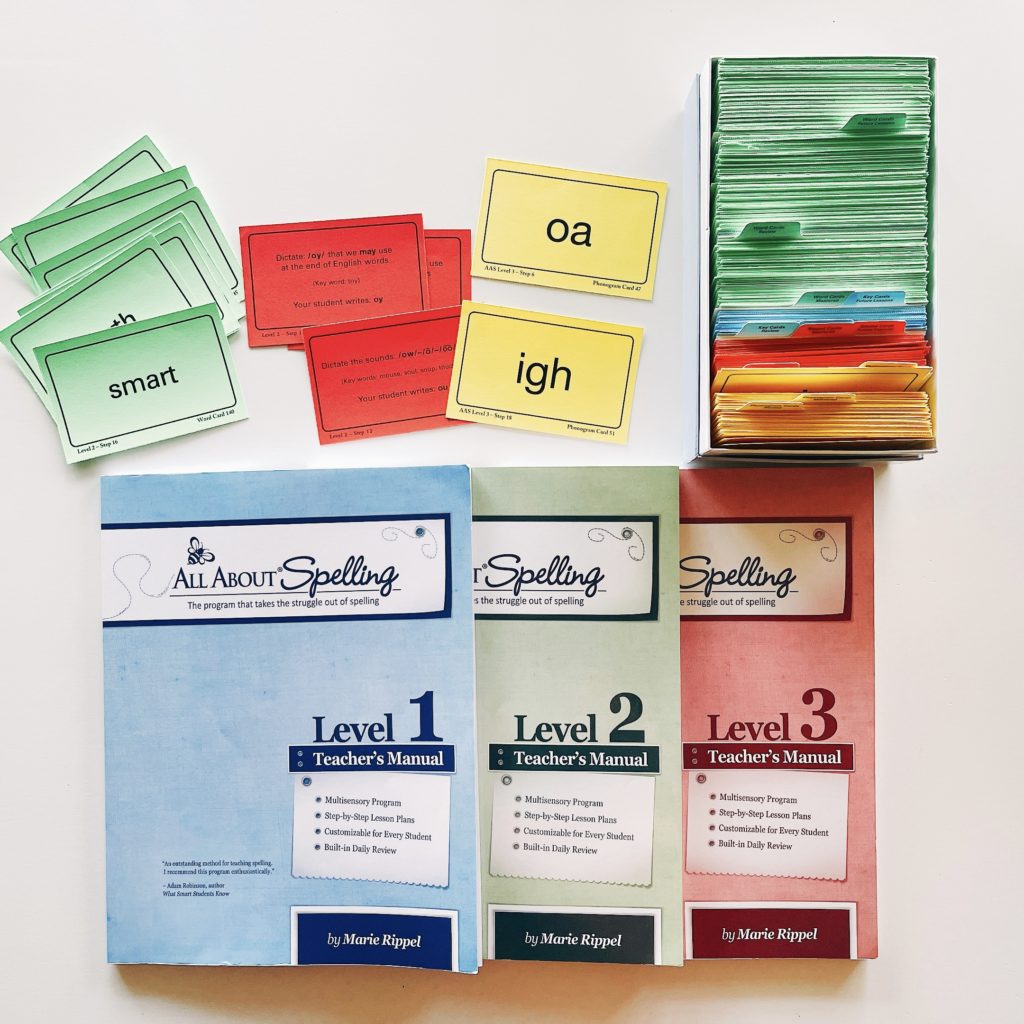We started to use All About Spelling (AAS) in 2020. My child was 6.5-years-old, and we started at Level 2. We are now at Level 4, and AAS continues to be a program that I use with my child, and for a good reason, even though she is back in school full-time. When I look down the list of contents, I know with certainty that my kid knows all the phonograms and the words associated with it. So, why then do I continue this program at home?
The answer is pretty simple. There is more to spelling than recognizing a phonogram or reading words accurately. This is because decoding (reading) and encoding (writing) are two different activities, and being a solid decoder does not automatically make you an excellent encoder. It is also why we need to teach decoding and encoding together. All these activities are integrated into sound phonics instruction.
Reading with fluency requires a critical early literacy skill called phoneme awareness. A phoneme is the smallest sound in a word. My oldest child learned to read in a Montessori school where the emphasis is on phonics (letter-sound relation). Advanced Phonemic awareness, which includes phonemic manipulation, was not an explicit instruction she received. But, I recently encountered a statistic in Essentials of Reading Success by Kilpatrick that states that 60-70% of kids develop phoneme awareness naturally. I assume my kid learned phoneme level reading naturally, but here’s what happens if this is not taught explicitly. She tends to fumble at unfamiliar words.
Nancy Young’s famous infographic, the Ladder of Reading, shows that about 60% of children require explicit, systematic reading, writing, and spelling instruction. An additional 35% of children likely need some form of instruction for writing/spelling even though reading comes pretty easy to them with broad instruction. You can click here to read more.
Spelling (also referred to as encoding) requires explicit instruction because it has many facets, unlike reading. For example, spelling involves the discernment of spelling rules.
So, how does a Spelling program such as All about Spelling support continued language skills for a proficient reader?
Here are five things you will miss out on if you do not use an explicit spelling program.
1. Emphasis on Writing
If you are learning new phonograms with a reading program, keep in mind that it does not translate to encoding. Reading involves text to sound.
Spelling is converting sound to text, and a structured spelling program will emphasize doing just that. You can look at ‘ee’ or ‘ei,’ and you know that the sound it makes is long ‘e’. But when you hear the sound long /e/, how do you know which phonogram to use? The instructions taught in a spelling program focus on finding the right phonograms you hear into written words.

2. Rules
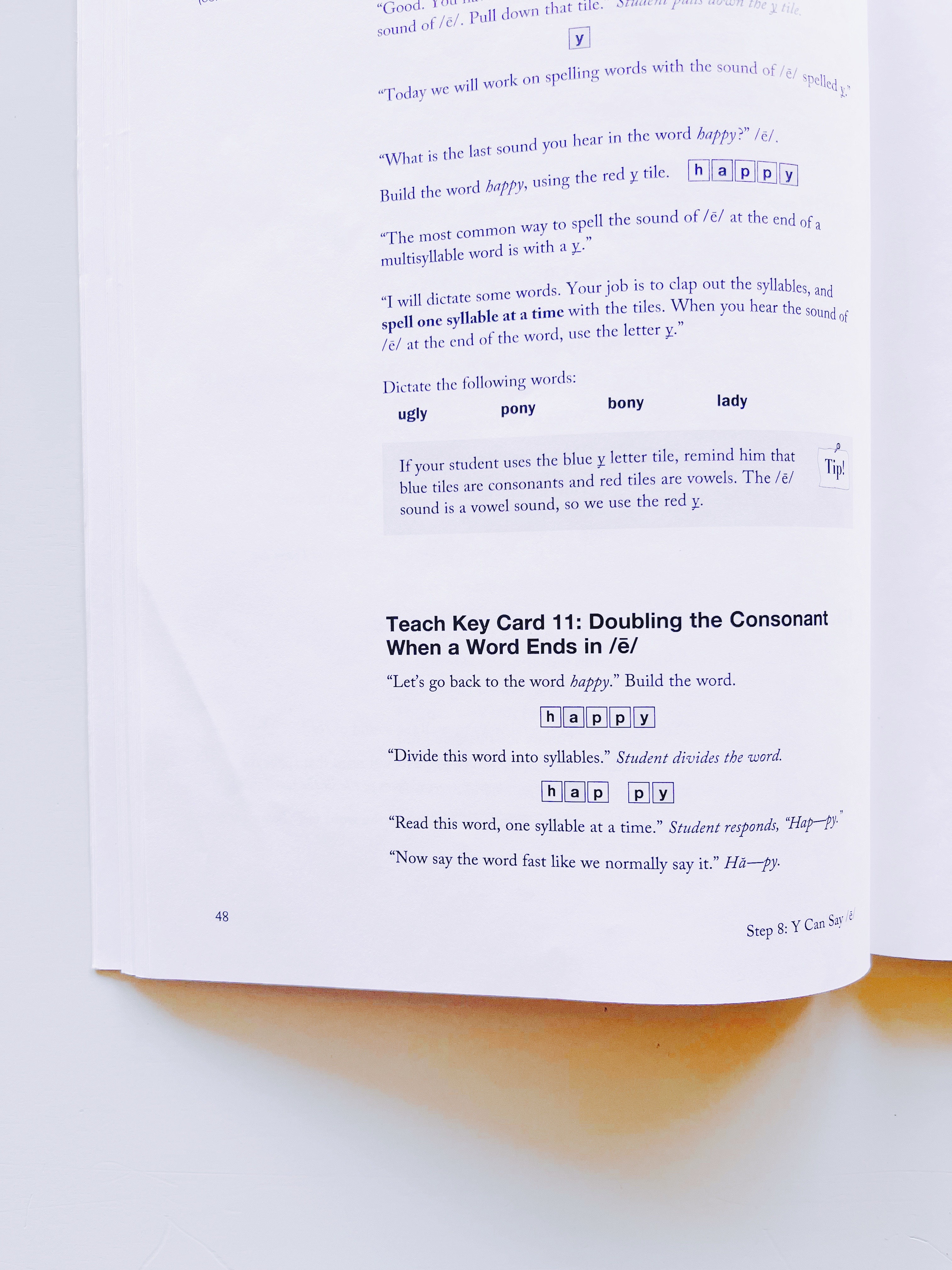
Sometimes finding the right phonogram requires the application of a spelling rule. A well-designed spelling program will teach you the rules behind using a phonogram.
For example, when we want to convert the sound /j/ into a written word, do we use ‘j,’ ‘g,’ or ‘dge’?
Let’s take the word edge. We use ‘dge’ because a short vowel sound precedes it.
Are you wondering what is the purpose of the letter ‘d’ in the phonogram ‘dge’? Read on to find out.
3. Reasoning
An explicit instruction will teach you the reasoning behind why some phonograms appear quirky but are not. When you learn the reason behind a spelling, it tends to stick longer. Many times this reasoning is tied to a spelling rule which you might overlook. Bottom line, there is a reasoning behind most phonograms.
Let’s take the example of ‘dge,’ the d exists to prevent the silent e from making the preceding vowel long, and silent /e/ exists to make g soft – as in /j/.
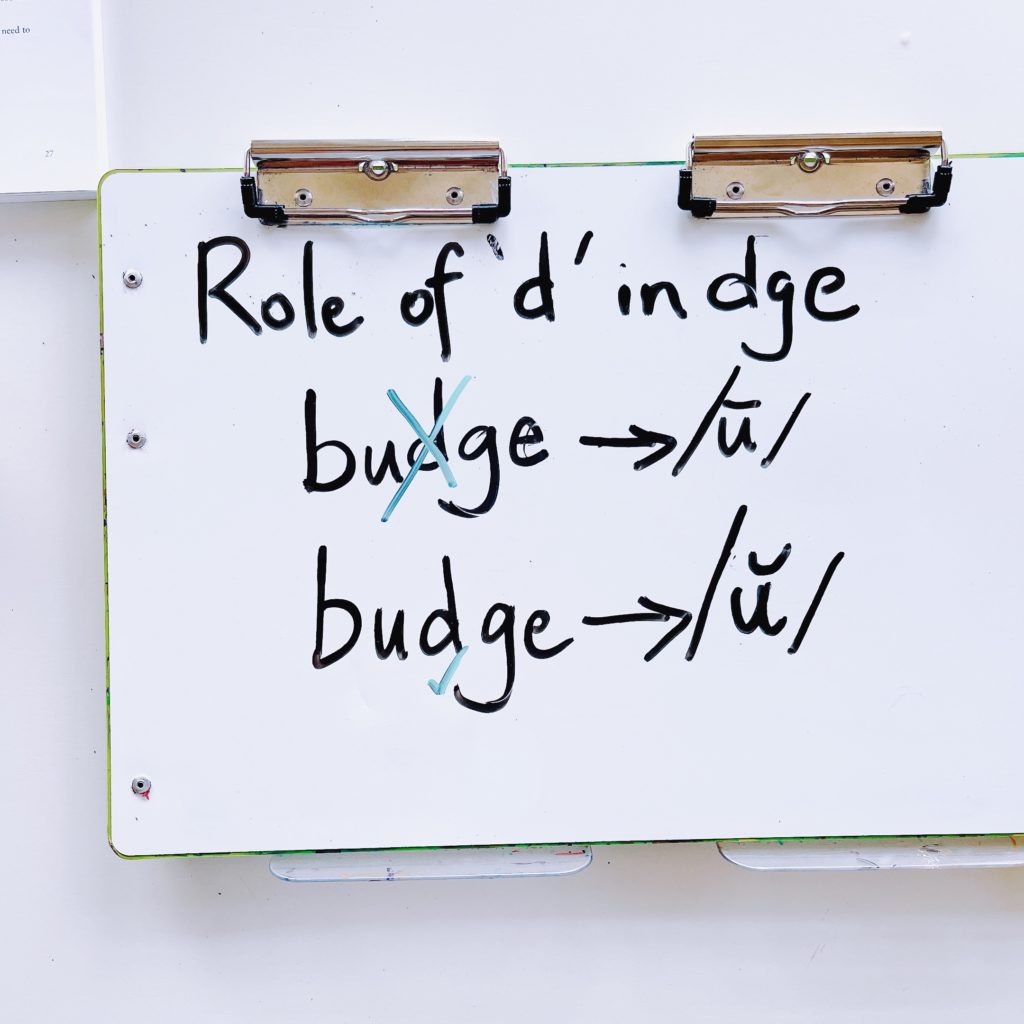
4. Rule Breakers
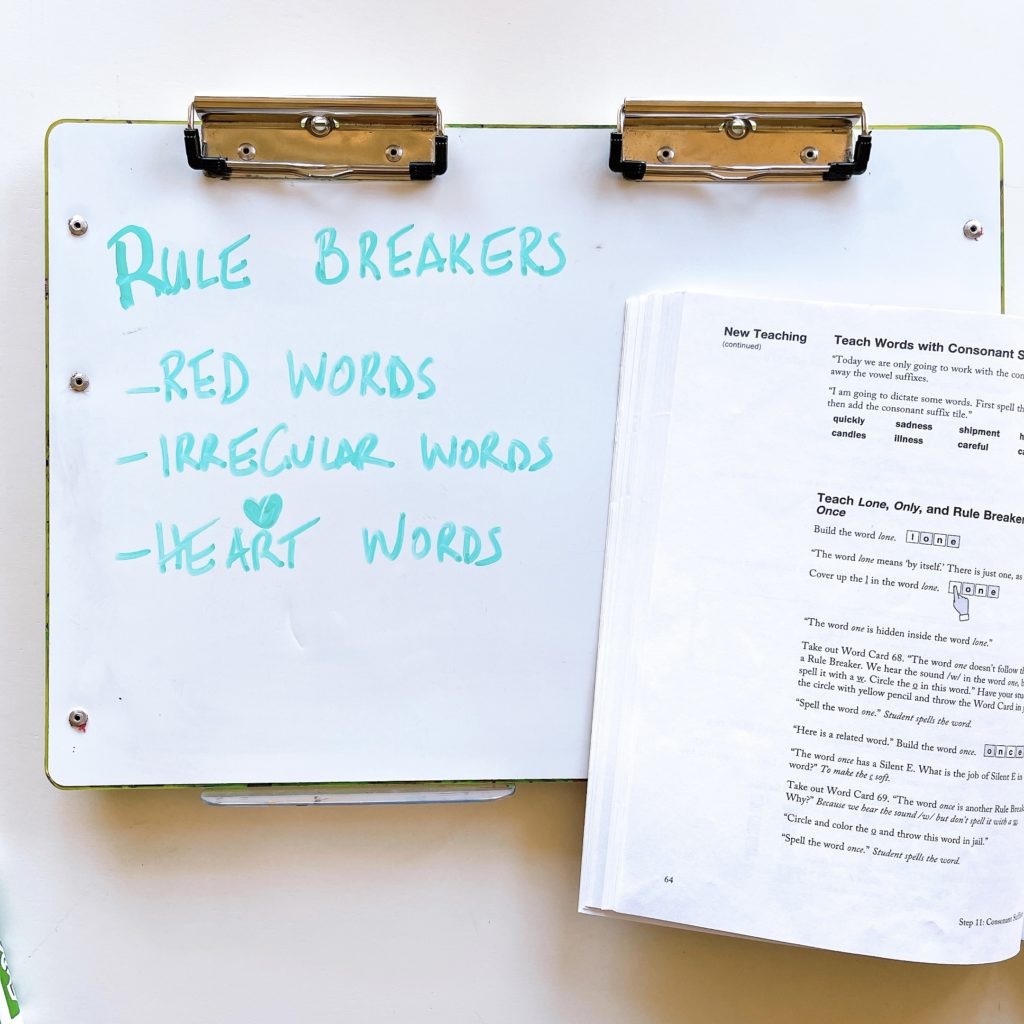
Did you know that only 4% of words in English are irregular and don’t follow any rules? I came across this statistic from an article in reading rockets, and you can click here to read more. How do kids learn these irregular words?
In All About Spelling, they call such words rule-breakers, otherwise referred to as irregular words, red words, or, most recently, heart words. These words most likely will have one or two sounds that do not follow the normal pattern. Because of this, it is possible to still sound it these words, and learn the irregular sound embedded in them. In this program, they teach these with their respective phonogram. For those unfamiliar with the science of reading, you need to know the term orthographic mapping. It is the process of mapping sounds in words by phoneme level and in doing so you build sight word memory, otherwise called orthographic lexicon. Heart words can also be mapped into sight word memory.
5. Spelling Strategies:
Now that your child knows the spelling rules, the reasoning behind phonograms, and rule-breaker words, how do they apply them and when do they use them?
What does your child do when they need to spell an unfamiliar word? This is where spelling strategies will be useful. Consider it a toolbox that will assist them in the encoding process. Level 4 of All About Spelling teaches four strategies that your child can use to tackle spelling. These strategies are explicitly taught in the context of spelling.
It teaches ways your child can analyze and break down words in order to reach the right spelling.
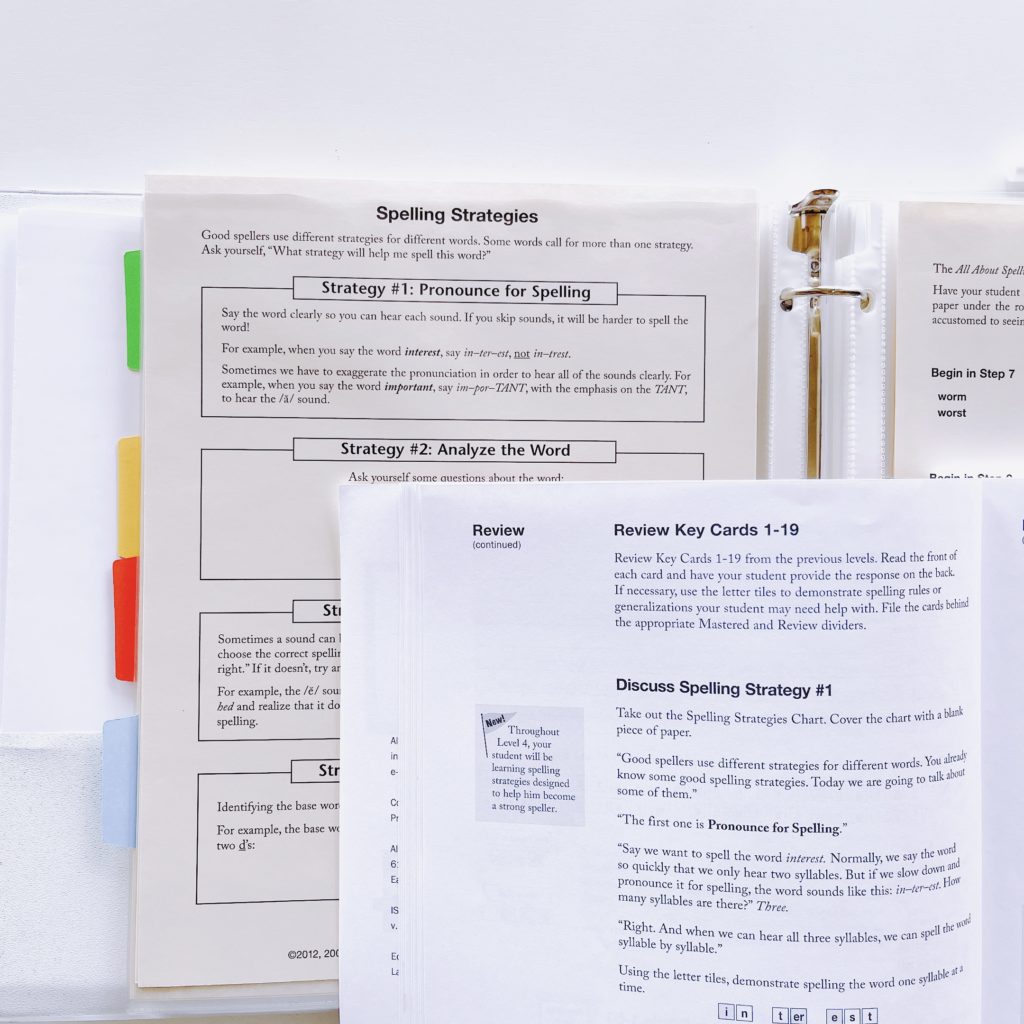
Conclusion
In conclusion, a reading program will teach your child to recognize phonograms and their sounds and apply them to a string of letters that makes words. A spelling program will help your child convert sound to text and have the ability to differentiate and select the accurate phonogram in the context of the word by applying reason g, spelling rules, and strategies. I hope this helps you understand the difference between a reading and spelling program and why you require explicit instruction for both. Leave a comment if you have any questions or find this helpful.
If you are curious about All About Spelling, check out their website and take a placement test for your child. Don’t be afraid -it is not an actual test.
